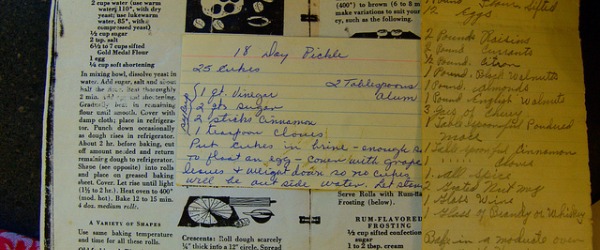So you grab a quick 5 minutes in between lectures to sit down and tackle an item on your to-do list: order a secondary antibody for an upcoming experiment. But when you start to search your favorite secondary antibody provider’s website, you realize it is not going to be a 5 minute job. Conjugated, F(ab’)2 fragments, affinity purified, light chain specific – the possibilities seem endless.
Navigating the secondary antibody world can be tricky – luckily I am here as your compass. Below is a quick guide to the many forms and types of secondary antibodies you might encounter.
Conjugation
No, I am not talking about yeast sex here! I am talking about secondary antibodies that are conjugated to other moieties to allow detection of the secondary antibody (and therefore the protein bound by the primary antibody).
Most downstream applications will require your secondary antibody to be conjugated. Luckily, choosing your secondary antibody based on conjugation is one of the easiest decisions you will have to make because it is directly determined by your application.
Fluorescent labels
Fluorescently-labeled secondary antibodies are conjugated to fluorescent dyes and are used in FACS experiments, in immunofluorescent detection of proteins in cells or tissues and more recently, in Western blot analysis using CCD detection. Several different colored dyes are available to allow visualization of multiple proteins simultaneously.
Enzyme-labeled
Secondary antibodies are also conjugated to enzymes such as peroxidase (commonly horse radish peroxidase) or alkaline phosphatase. Incubation of the secondary antibodies with appropriate substrates can produce color or light for detection of the intended protein. Colorimetric assays are commonly used in immunohistochemistry or ELISAs while light-producing substrates are used for Western blots.
Biotin-labeled
Biotin-labeled secondary antibodies are used to amplify the signal and increase sensitivity over fluorescent- or enzyme-labeled antibodies. They are usually used in colorimetric assays such as immunohistochemistry and ELISA assays.
Polymer-conjugated
A more recent secondary antibody conjugation technology is polymers. Several companies market polymer-conjugated antibodies (usually a proprietary technology) and accompanying detection kits. Polymer-conjugated antibodies are touted as being highly sensitive and specific. Polymer-conjugated secondary antibodies are used in ELISA assays, Western blot and immunohistochemistry.
What does the primary antibody look like?
The second-most likely factor in determining which secondary antibody you buy is the species of animal in which your primary antibody was derived and the type of antibody (class and subclass) it is.
Species
Your secondary antibody must recognize your primary antibody. If your primary antibody is a monoclonal, then you must purchase an anti-mouse secondary. Similarly, if you are using a primary polyclonal antibody made in chickens, then you must buy an anti-chicken secondary.
Class and subclass
The secondary antibody must also be specific for the class and subclass of the primary antibody. This is particularly important when working with monoclonal antibodies, which are homogeneous. For example, some monoclonal antibodies are mouse IgM while others are IgG. Secondary antibodies specific for each class can be purchased.
Mouse IgG antibodies can also be classified further by subclass, IgG1, IgG2a, IgG2b, IgG2c, IgG3. While a general anti-mouse IgG secondary antibody can be purchased that will recognize all subclasses, sometimes it can be advantageous to purchase a sub-class specific antibody (e.g. anti-mouse IgG2a) to increase the specificity of the interaction.
Most polyclonals from other species are of the IgG class and species-specific anti-IgG antibodies work well (e.g. anti-goat IgG). The exceptions are bird antibodies that are novel immunoglobulin proteins called IgY.
Heavy or light chain antibodies
Before I describe the different forms of secondary antibodies you can purchase, I think it might be helpful to review the structure of an antibody.
All antibodies (primary or secondary) are large proteins composed of 4 polypeptides that form the shape of a Y (see Figure 1). The Y is made up of two identical larger polypeptides, denoted the heavy chains, and two homologous smaller polypeptides, called the light chains. When assembled together, the “tips” of the Y (each composed of a heavy and light chain) form antigen recognition domains (shown in yellow). The antigen recognition domain is called the fragment-antigen binding, or Fab fragment. The Fab fragment is highly variable and accounts for the specificity of the antibody for a particular antigen.
Each heavy and light chain also contain a non-variable region called the conserved region, or Fc fragment (shown in blue).
Secondary antibodies can be purchased that recognize only specific parts (heavy or light chains).
Anti-H+L
An anti-heavy and light chain (H+L) secondary antibody recognizes both the heavy and light chains of the antibody molecule. This is a commonly used secondary antibody particularly when the class of the primary antibody is unknown, since all immunoglobulin classes share the same light chains.
Light chain-specific secondary antibodies
You can also purchase secondary antibodies that only recognize light chains. These antibodies can be very helpful when performing immunoprecipitations followed by Western blotting. Use of the anti-light chain antibody will prevent recognition of the 50kDa heavy chain protein on the blot. However, the 25kDa light chain protein will still be visible.
Do Fab fragments make an antibody (Fab)ulous?
You can also purchase secondary antibodies in which the Fc portion has been cleaved off leaving just the antigen recognition domain, called F(ab’)2 after cleavage. These secondary antibodies are especially helpful when working with cells or tissues that contain Fc-binding receptors that bind antibodies non-specifically. Use of the F(ab’)2 secondary ensures that the secondary antibody is only binding to the primary antibody through its antigen recognition site.
Antibody purification
Secondary antibodies can also undergo additional purification steps to increase the specificity of the antibody.
Affinity purified
Affinity purified secondary antibodies are purified through a column containing the antigen of interest. Therefore they usually give the lowest amount of non-specific binding. Additionally, affinity purified secondary antibodies have the benefit of containing very high affinity antibodies. Therefore, they may be useful in detecting proteins that are in low abundance.
Adsorbed Secondary Antibody
Some secondary antibodies are adsorbed against animal or human IgG. They are designed for particular applications (such as immunohistochemistry) and give reduced non-specific background. Care needs to be taken when using these antibodies though; adsorption can also titrate out the desired antibodies and lead to a decrease in sensitivity.
Hopefully instead of making your head spin I have given you a direction to head off in. Happy antibody hunting!








